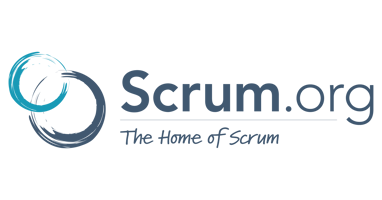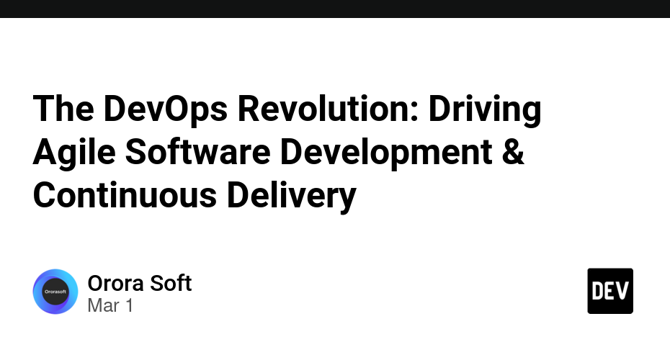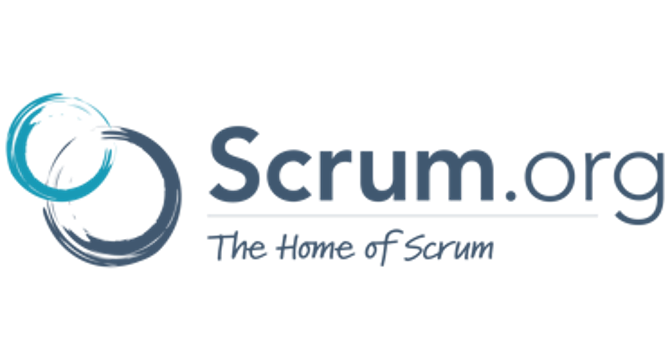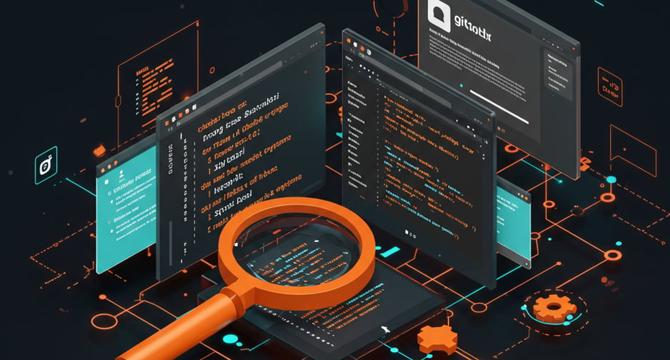Agile Methodology News
Scrum
317

Image Credit: Scrum
Behind the Bottlenecks: The Root Causes of Dependencies in Teams
- Dependencies in product development can lead to major bottlenecks, affecting timelines, costs, and team morale.
- They are crucial for collaboration but can become disruptive if not managed effectively.
- Common root causes of dependencies include lack of skills, decision delays, tightly coupled architecture, and reliance on external suppliers.
- People-based dependencies occur when tasks rely on specific individuals' availability or expertise, leading to delays when needed personnel are unavailable.
- Decision-based dependencies involve delays in approvals or strategic decisions, hindering progress and causing misalignments.
- Architectural dependencies stem from tightly coupled systems that limit flexibility and scalability, slowing down migrations and new feature development.
- External dependencies, such as third-party APIs, introduce risks due to factors beyond the team's control, like delays or limited support.
- Managing dependencies effectively requires a structured approach, tailored strategies, and proactive planning to mitigate risks and ensure smoother product delivery.
- Identifying, categorizing, and planning for dependencies early on can help teams navigate challenges and improve predictability in their workflows.
- Stay tuned for the next part of the series for actionable insights on how to categorize dependencies effectively and enhance your product delivery processes.
Read Full Article
19 Likes
Scrum
104

Image Credit: Scrum
True Leadership: It’s Not the Title, It’s the Impact You Make
- Leadership is not just about holding a title, but about the impact you make and the trust you build.
- True leadership focuses on unlocking potential, creating opportunities, and giving people the confidence to push past their limits.
- To transition from just holding a title to actually leading, start by asking how you can help others deliver their best work.
- A culture of safety, trust, and empowerment is key to driving innovation, collaboration, and personal accountability.
Read Full Article
6 Likes
Scrum
240

Image Credit: Scrum
Product Backlog Management with Upstream Kanban – from chaos to clarity
- Product Backlog Management can be challenging for Product Owners, leading to cluttered backlogs and inefficiencies in refinement sessions.
- Traditional single-column backlog lists may not be the most effective approach for managing backlogs efficiently.
- Product backlog refinement involves breaking down items, prioritizing, detailing, estimating effort, and keeping the backlog relevant.
- Kanban, as a flow-based strategy, can complement Scrum by optimizing value flow in the process.
- Upstream Kanban focuses on managing incoming requests before committing to downstream work, promoting a structured approach to backlog management.
- Key stages in Upstream Kanban include triage, exploration, and readiness for effective backlog item delivery.
- Challenges of a single-list product backlog include prioritization overload, lack of visibility, limited stakeholder insight, and overwhelming backlog size.
- Implementing Upstream Kanban can provide clarity, improve workflow, and empower teams to manage backlog items more effectively.
- Adopting practices like STATIK, CONWIP, swimlanes, work item types, and Kanban metrics can enhance product backlog management.
- Scaling Upstream Kanban for multi-team setups can help manage complexity and improve end-to-end value flow.
Read Full Article
14 Likes
Scrum-Master-Toolbox
435

Anuj Ojha: From Process Police to People Partner, Self-Accountability and Self-Awareness for Scrum Masters
- Anuj Ojha, co-founder & Lead Consultant at Benzne Consulting, shares his personal growth journey as a Scrum Master.
- He shifted his focus from being process-oriented to being people-oriented, embracing conflict as a natural part of growth.
- Anuj learned to deliver value and became more of a listener, understanding the importance of self-awareness and self-accountability.
- His transformation led him to connect with and serve his team members better, navigating challenges through self-reflection and feedback-seeking.
Read Full Article
26 Likes
Discover more
- Programming News
- Software News
- Web Design
- Devops News
- Open Source News
- Databases
- Cloud News
- Product Management News
- Operating Systems News
- Computer Engineering
- Startup News
- Cryptocurrency News
- Technology News
- Blockchain News
- Data Science News
- AR News
- Apple News
- Cyber Security News
- Leadership News
- Gaming News
- Automobiles News
Medium
349

Image Credit: Medium
The Fall of Scrum and the Rise of Product Management
- Scrum, a lightweight software development method, experienced rapid growth from 2010 to 2020, becoming dominant.
- However, recent data suggests a decline in Scrum usage, with only 60% of software development teams using it by 2024.
- Surveys reveal growing dissatisfaction with Scrum, indicating that teams feel it is not delivering expected benefits.
- The decline of Scrum may lead to changes in the role of product managers.
Read Full Article
21 Likes
Medium
59

Image Credit: Medium
How OKRs inspire
- OKRs help leadership clarify what is important and facilitate alignment, collaboration, and self-organization.
- OKRs provide a framework for teams to understand their accountability and contribute to the Objectives measured by Key Results.
- OKRs foster both teamwork within product teams and cohesiveness within the leadership team.
- The use of OKRs in training and small team case studies is an example of how organizations are investing in them.
Read Full Article
3 Likes
Medium
64

Image Credit: Medium
80% of Features in Products Are Rarely or Never Used — Here’s Why!
- A fast-growing software company spent 18 months building and launching new features.
- However, when they analyzed how customers were actually using the product, they found that 80% of the features were rarely or never used.
- The company realized that they were making the product worse by building everything upfront with no time for iteration and improvement.
- To eliminate waste, the company adopted a continuous learning approach, focusing on small releases, testing, and improvements based on customer feedback.
Read Full Article
2 Likes
Dev
290

Image Credit: Dev
The DevOps Revolution: Driving Agile Software Development & Continuous Delivery
- Traditional software development models often hinder progress, creating bottlenecks and delays.
- DevOps is a cultural shift that promotes collaboration, automation, and infrastructure management.
- DevOps practices accelerate release cycles, improve software quality, and foster a cohesive team.
- DevOps transformation is necessary for business survival, enabling agility, innovation, and trust.
Read Full Article
17 Likes
Scrum
86

Image Credit: Scrum
Reflect On The Empirical Pillars Of Scrum
- In complex work, more is unknown than known.
- Key pillars of Scrum: transparency, inspection, and adaptation.
- Scrum artifacts create transparency of future, present, and past work.
- Reflecting on the empirical pillars of Scrum enables improvement and effective usage of Scrum events.
Read Full Article
5 Likes
Scrum-Master-Toolbox
77

BONUS: How To Build Trust and Manage Conflict, With Maria Arpa
- Maria Arpa shares insights on building trust and managing conflict in the workplace.
- Recognizing and addressing power dynamics in the workplace is crucial for effective communication.
- Creating safe spaces for difficult conversations is important for conflict resolution.
- Empathic connection and viewing conflict as a resource drive positive change.
Read Full Article
4 Likes
Dev
400

Image Credit: Dev
Code Review: Best Practices
- Code Review is a crucial part of the software development process, helping improve code quality and efficiency.
- Key benefits of Code Review include easier reviewing, faster approval of pull requests, and receiving better feedback.
- Tips for writing code that's easy to review include committing frequently with small changes and using rich commit messages.
- Visual enhancements like screenshots and videos can help provide context for changes in the code.
- Effective code reviewing involves carefully reading PR descriptions, avoiding nitpicking, and prioritizing reviews to aid team members.
- Adding references to suggestions and praising good work during reviews can create a positive environment.
- Creating useful PR templates, checklists, and implementing automation can streamline the code review process.
- Encouraging a positive code review culture leads to continuous learning, collaboration, and software improvement.
- A structured Code Review process facilitates knowledge sharing, strengthens team relationships, and enhances code quality.
- Adopting best practices in Code Review can transform it into an enriching experience that benefits the entire project.
Read Full Article
24 Likes
Alvinashcraft
264

Image Credit: Alvinashcraft
Dew Drop – February 28, 2025 (#4372)
- The Dew Drop for February 28, 2025, features top links in technology including podcasts, software releases, and coding updates.
- Notable mentions in the web and cloud development section cover topics like TypeScript, Azure Functions, and Dapr v1.15 release.
- In WinUI, .NET MAUI, and XAML, Uno Platform updates its Todo Sample while Visual Studio 2022 v17.13 introduces AI-powered enhancements.
- AI-related highlights include OpenAI's GPT-4.5 system card, Microsoft Copilot developments, and discussions on AI in gaming.
- Design, methodology, and testing articles focus on mental health in IT, CI/CD best practices, and serverless computing.
- Mobile development updates include Amazon CEO's hint at new Alexa hardware, the Raspberry Pi Official Magazine, and EA's release of old game source code.
- Screencasts, podcasts, community events, and database management also find mentions in this technology roundup.
- Miscellaneous news includes reports on Microsoft potentially discontinuing Skype, DOGE's impact, and Trump's tariffs taking effect.
- Additional links collections provide quick access to Oracle Database news, Windows updates, and daily reading lists.
Read Full Article
15 Likes
Kanbanzone
146

Image Credit: Kanbanzone
Focused Weekly Planning: More Improvements, More Tasks Accomplished
- The author discusses finding and buying a new house, highlighting the process of handling the unplanned task through a detailed Kanban board.
- The use of description fields, cloud storage for documents, and checklists on the Kanban card aided in organizing information effectively.
- The article emphasizes the benefits of using Kanban in reducing reliance on emails, enabling easy access to all work-related information on a single card.
- Improvements in weekly planning involved setting clear goals, maintaining realistic tasks, and creating a card template for recurring weekly planning.
- The recap of the week showcases successful completion of tasks related to buying a house, spending time with family and friends, and maintaining priorities.
- The author expresses satisfaction with the focused weekly planning approach and looks forward to planning for the upcoming week.
Read Full Article
8 Likes
Scrum-Master-Toolbox
132

Season Hughes: From Defensive to Collaborative Product Ownership
- A great Product Owner demonstrates deep care for both the product and the team members, understanding their challenges and experiences.
- The Bad Product Owner responds defensively to team proposals, creating an atmosphere of tension and reduced collaboration.
- Self-reflection Question: How do you ensure your communication style encourages collaboration rather than defensiveness?
- Season Hughes is a strategist and creator focused on empowering customers and teams to excel in product ownership.
Read Full Article
7 Likes
Testim.io
282

Image Credit: Testim.io
Javascript Unit Testing: Get Started Quickly and Easily
- JavaScript unit testing is essential for ensuring the quality and consistency of your software.
- Tests are valuable in verifying that your code functions as intended and remains stable as it evolves.
- It is recommended to start testing early in your development process and incorporate tests for all new work.
- Tests should be run continuously during development and also automated in a separate system to ensure readiness for production.
- Jest is a popular tool for JavaScript testing due to its ease of use and comprehensive functionality.
- Setting up Jest involves installing it as a dev dependency and creating tests using matchers for assertions.
- The Arrange Act Assert method is a common structure for organizing tests logically.
- Jest offers various matchers for different types of assertions to validate code behavior.
- Setup methods in Jest help prepare the system for testing and reduce duplication in code.
- Asynchronous testing in Jest is facilitated through async/await for handling processes that rely on promises.
Read Full Article
16 Likes
For uninterrupted reading, download the app